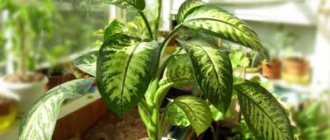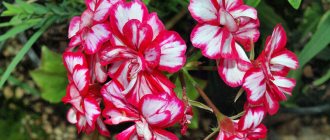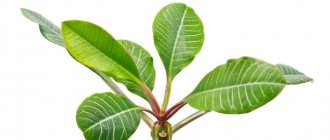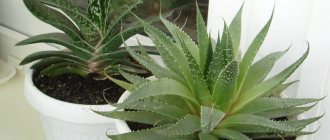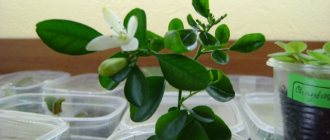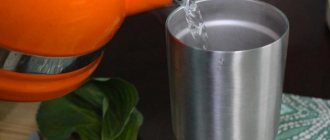It is believed that ficus brings good luck and cleanses energy, so many housewives would like to acquire this home shrub. Ficus benjamina is very popular now. This is due to the fact that its trunks can be intertwined into beautiful structures, the crown can be trimmed, and beautiful Bonsai can be created. Very often the question arises of how to grow ficus benjamina at home. This plant is quite unpretentious and is not difficult to propagate.
Spring and early summer are ideal for propagation, since during this period the plant begins to grow more actively, acquires new branches and foliage, and the root system also grows more rapidly.
There are several ways to propagate Ficus Benjamin:
- Cuttings;
- Reproduction using seeds;
- Microcloning.
At home, the first two types of reproduction are most optimal. Since cloning is used on an industrial scale, or when breeding new varieties of ficus. In this case, gardeners receive an exact copy of the donor plant.
How to grow ficus benjamina at home
Growing ficus benjamina is not easy. This plant comes from tropical countries, so it loves moist air, bright light and warmth.
Despite its demanding conditions, Benjamin's ficus (Ficus Benjamina) is very popular because of its beauty.
It grows up to one and a half meters in height, forming a lush tree, the trunk and branches of which are completely covered with small white-green leaves. The Starlight variety has especially many white spots
. The shape of ficus leaves is similar to cherry leaves, only without teeth along the edges.
How to grow ficus benjamina
The most affordable option to become the owner of a charming variegated plant is to purchase it at a flower shop. Young Benjamin ficuses are inexpensive and are always on sale. Those who are interested in growing an evergreen exotic “from scratch” can try to propagate it at home using the vegetative or generative method.
From seeds
To grow ficus from seeds,
it will take time and patience. Seeds take a long time to germinate, seedlings grow slowly.
Sowing technology:
- buy several seeds at the store;
- soak them for a day in a solution of Epin or Humate to increase germination;
- sow in soil prepared from garden soil diluted with peat and sand (hole depth 0.5 cm);
- fill the holes with the seeds lying on the bottom with coarse sand;
- pour with warm, settled water;
- cover with film or glass;
- open the vessel daily for 15 minutes for ventilation;
- maintain temperature 23-25 °C;
- with the appearance of sprouts, increase the ventilation time to 2 hours a day;
- when all the seeds have sprouted, the film can be removed;
- place the seedlings in diffused sunlight and illuminate them with fluorescent lamps in winter;
- with the appearance of the first leaf, pick the seedlings into separate pots, removing the weakest specimens;
- In new pots, make a thick drainage layer of broken brick or expanded clay.
Seedlings should be kept in an eastern or western window and ensure that the soil does not dry out too much. Fertilize once every 2 weeks with complex fertilizer for decorative foliage.
From a shoot or twig
To propagate by cuttings, you need to cut a branch about 15 cm long. It should have 4 leaves. The cuttings are cut with a sharp knife so that the cut area is smooth and not wrinkled. The optimal time for rooting cuttings is early spring.
You will need any root growth stimulator:
The listed drugs are sold in gardening stores. Heteroauxin is considered the most effective.
Rooting technology:
- place the freshly cut stalk in water so that
the milky juice comes out of the branch - remove the bottom pair of leaves, leaving the top ones;
- place the cuttings in a growth regulator solution;
- maintain the time recommended in the instructions;
- plant at an angle of 45 degrees in a loose, light substrate so that the cuts from the lower leaves are underground;
- pour, put any transparent lid on the container;
- keep at air temperature +20 °C.
Roots form within 3-4 weeks. When their length reaches several centimeters, the seedling can be transplanted into a permanent pot.
How to plant ficus benjamina so that the stems intertwine
with a wicker trunk from several ficus plants
.
To do this, in the spring, when houseplants are replanted
, two or three young plants of the same height are planted in a pot. If you plan to create a spiral, 2 copies will be enough, for a braid you will need 3 plants about 15 cm high. The stems are braided, tied with soft woolen thread. Every two months the binding must be removed and done in a new place, otherwise the stems will be damaged.
Young shoots that have not yet begun to lignify and are held together with a bandage subsequently retain the shape given to them. The complete formation of ficus takes several years.
We propagate ficus in the ground
There is another way to propagate ficus using cuttings at home - planting cut branches directly into the ground. To do this, you need to select a special mixture of soil that young ficus plants love. If you want to make the mixture yourself, for this we take in equal parts:
- peat soil;
- sand;
- leaf humus.
You can also find packages with the finished substance in stores; they are also suitable for this procedure.
For such rooting, we prepare cuttings in the same way as in the instructions above. After that:
- take the dried cut and sprinkle it with crushed coal;
- we plant the sprout in the ground on one bud;
- cover the plant with a three-liter jar, thus creating a mini greenhouse for it, a plastic bag will also do;
- we water the soil moderately, until it grows it should not be dry, but at the same time you should not make a “swamp”;
- put the pot in a warm place, for example next to a radiator, but no direct sunlight;
- When the branch takes root, you will see new leaves, after which we gradually remove our greenhouse. We start with 15-20 minutes a day so that the tree gets used to the new conditions.
Caring for Ficus Benjamin
Ficus benjamina feels good in bright but diffused light. Direct sunlight leaves burns on the leaves, makes them faded, and the plant loses its decorative effect. In summer, the temperature should not rise above + 25 °C. In extreme heat, the tree sheds its leaves, as well as when there is a lack of light. In winter, it is enough to maintain the room temperature at +17 °C.
Ficus benjamina likes frequent spraying. Moisture protects leaves from spider mites, washes away dust, and prevents leaf fall, which indicates unsuitable living conditions.
Plants are watered regularly, more often in summer than in winter. If water has accumulated in the pan, it must be drained immediately - the roots of the Benjamin ficus do not tolerate dampness. If the soil dries out, the plant will immediately shed some of its leaves to reduce evaporation. Therefore, when choosing a watering mode, you should adhere to the rule - take up the watering can when the top layer of the earth dries out, but there is still moisture in the depths.
Feeding is carried out every 2 weeks, in winter once a month. Suitable fertilizers :
- Agricola for ficus;
- Bona forte for ficus and palm trees;
- “Flower paradise” for ficus yucca and dracaena.
If the plant begins to shed its leaves, you need to move it closer to the window or, vice versa, remove it from the draft. Check the room temperature and soil moisture in the pot. If the soil is dry, the ficus should be watered first with clean water, and then with fertilizer diluted in water. After some time, the tree will restore its decorative appearance.
Who is this plant suitable for?
Indoor
Ficuses reach a significant size, so they are suitable for owners of spacious rooms. The plant is used for landscaping bright offices, shopping centers, and lobbies. An adult bush can be kept in the back of the room, a few meters from the window.
There are signs associated with this type of ficus. Esotericists note its beneficial effect on the psychological situation in the family. Ficus is a real symbol of home comfort. It improves the energy of the home and increases the comfort of everyone in the room. In its homeland, it is considered a sacred plant that brings good luck and happiness.
Ficus benjamina is a beautiful, popular plant, but it requires care and regular maintenance. It perfectly decorates the interior, suitable for apartments and public spaces.
Caring for a young sprout - watering, lighting and temperature conditions
Ficus loves good lighting, but not direct rays, but bright diffused light. Therefore, it is more advisable to place it not on the windowsill, but in a dark place. It is also not recommended to go to dark places, as the shoots will begin to branch in one direction, stretch towards the light source, the leaves will sharply decrease in volume, become faded and inconspicuous.
The plant develops well at temperatures from 18 to 26 C. If the temperature begins to rise, the leaves will begin to dry out. To avoid this, it is necessary to spray and wipe the leaves with a damp cloth. If the flower is irrigated with water with the addition of milk, the leaves will be shiny and glossy.
Watering the young sprout should be regular - every 3-4 days. In summer, you should not maintain such an interval, but water as the soil dries out. In winter, watering is reduced to once a week.
It is necessary to feed the flower from March to October, with intensive growth and crown development - 4 times a month. In summer, it is necessary to alternate mineral and organic supplements every 7-10 days. When replanting, you should thoroughly feed the plant.
While watching the video, you will learn about the propagation of ficus leaves.
Thus, propagating ficus is a fascinating activity. Reproduction of stepsons is possible in several ways, but the sprout takes root best when rooted by leaves. It’s so easy to grow and care for – the main thing is desire.
Ficus - growing from seeds at home
Ficus - growing from seeds at home
Ficus trees have been cultivated for centuries as decorative indoor plants, once decorating palace winter gardens and window sills of cheap hotels. Nowadays, it’s rare that a self-respecting office can do without a stylish flowerpot with a luxurious evergreen tree or an exotic ficus in the bonsai style (more often it’s a ficus blunted, on whose powerful aerial roots the side branches rest). And in home collections you can find several varieties of the popular Benjamin series.
In flower salons you can purchase the coveted bush of Sacred Eden or rubber-bearing ficus - retail chains offer a huge selection of varieties, selling both very young plants and decorated adult specimens. It is very easy to grow a tree from a cutting. But among flower growers there are many gambling lovers who prefer to experience the entire development process from the very beginning - from sowing the seed.
Description of ficus
The roots of some ficus trees are so strong that they can penetrate the cracks of rocky rocks and destroy them. Some of the representatives of the genus Ficus are stranglers of their fellow plants - they begin their life cycle on the branches of other plants, where they fall in the form of seeds with the help of birds and wind.
Various types of indoor ficus
They don't need soil to grow. They germinate in the tissues of a foreign plant and receive vitality from it. Absorbing sunlight and moisture from the air, they gradually form aerial roots, which then entwine the owner of the place and oppress him. As a result, the plant that sheltered the foreign seed dies, and a ficus strangler grows above it, relying on the openwork of the root system.
Ficus aerial roots
Of the 1000 plants included in the genus ficus, dozens of its representatives fit into home interiors. Various indoor ficus plants were popular back in the era of our great-grandmothers. The list of the most famous includes tree species:
- various varieties of large-leaved and small-leaved Benjamin ficus with drooping branches and densely spaced leaves;
- rubber varieties containing milky sap in their stems;
- variegated varieties with different leaf shapes.
Important! Flower growers believe that growing ficus trees is not a difficult matter. Indeed, knowing how ficus reproduces, with the right approach to growing these plants, you can grow them without much effort.
Video: how to grow ficus from seeds
The seeds are sprinkled with a planting substrate or coarse sand in a layer of up to 0.5 cm. The soil is moistened again using a spray bottle and the container is covered with glass or film.
The greenhouse with crops, installed in a warm (at least 25 degrees) and well-lit place, is opened slightly for half an hour every day so that the soil can “breathe”, ventilate, and condensation does not accumulate.
Seedling care
As soon as the first shoots appear (and the seeds germinate unevenly), daily ventilation is gradually extended so that the seedlings get used to the conditions outside the greenhouse. At the same time, soil moisture requires special control: drying out of the soil is unacceptable.
When most of the seeds have hatched from the ground, the cover glass (film) can be removed completely: the sprouts no longer need greenhouse conditions.
Seedlings with a pair of true leaves require picking into separate pots. Not forgetting about drainage, new pots are filled with the same soil as when sowing, and each sprout is transplanted into an individual pot, watered and placed in a dark place for 2-3 days so that the young ficus spends energy not on growing greenery, but on rooting .
Reproduction by layering
Another way to propagate Ficus Benjamin is by layering ; in the photo you can see with your own eyes the technique for preparing cuttings.
This propagation option allows you to obtain several adult plants reaching a height of 50 cm. The first stage of the process will be to remove foliage and shoots from a section of the trunk located at a distance not exceeding 60 cm from the top of the plant. In a cleaned area, you need to make a circular cut of the bark , treat it with root or other stimulants that activate root growth . Next, the cut is wrapped in damp moss , and cling film is placed on top of it. The entire structure is held in place with tape or tape.
The main thing is not to wrap the film and moss too tightly. After 30-60 days, roots will appear at the place where the bark was cut. The plant can be separated from the mother plant and transplanted into an individual pot.
Caring for ficus after planting
The pot with the seedling occupies the warm and well-lit place allotted to it, protected from drafts, until the next transplant. The young plant will develop well if you follow the watering regime: ficuses should not be over-watered, but the substrate should not be allowed to dry out. It is recommended to water with settled water at room temperature. Tropical evergreen trees love spraying with soft, warm water. During the period of active growth, ficus plants are fed with complex fertilizers.
For the first five years, the grown ficus is replanted annually in the spring into fresh nutrient soil and a slightly larger pot. Later, an actively developing plant requires transplants every 3-4 years.
By observing simple conditions for keeping ficus trees, you can grow a luxurious plant from a seed that can become a bright accent in a collection of ornamental plants.
How to grow ficus from seeds
Agree, ficus can be confidently called the most popular indoor plant. This constant “resident” of city apartments, country houses and offices has long won everyone’s sympathy thanks to its decorative qualities and ease of care. You can buy ficus in almost any specialized store, but it is much more interesting to grow it yourself, watching how this beautiful plant is born from a tiny seed.
It will, of course, take time to grow a ficus. Ficus grows relatively slowly, but there are usually no problems when growing it. This plant does not require any specific maintenance conditions, but the seedlings still need to be given special attention. It is important to understand that proper care during the growth period is the key to the formation of a beautiful and strong plant.
How to prepare ficus seeds for planting
Having purchased seeds in a specialized store, you should carefully study the instructions, because the selected variety may have special requirements for planting conditions.
Before planting, it is advisable to soak ficus seeds for a day in a solution of a growth stimulator. The use of drugs such as “Heteroauxin”, “Epin” or “Gumate” will increase seed germination and will help increase resistance to diseases in the future.
Container and soil for sowing ficus seeds
The prepared seeds are planted in soil, which it is advisable to prepare yourself. Ficus grows best on light, water- and breathable soils, so a considerable amount of sand is added to the substrate. The base of the soil should consist of leaf soil and peat, to which you can add a little fertile garden soil. The final substrate should be crumbly and homogeneous.
Substrate for planting:
- Purchased - special for ficuses, diluted with sand 2:1;
- Any ready-made soil with neutral acidity or slightly acidic, with the addition of sand in the same ratio;
- Self-assembled from leaf or turf soil (2 parts), peat (1 part), compost (1 part) and sand (1 part)
It is better to choose containers for germinating seeds that are wide (this will make it easier to care for the seedlings) and shallow (the seedlings will have to be transplanted quickly). Even if you plan to grow only one ficus, it is advisable to plant several seeds. Firstly, the germination rate will probably not be one hundred percent, and secondly, from the resulting seedlings it will be possible to select a couple of the tallest and most beautiful specimens in the future.
How to sow ficus seeds correctly
Drainage is poured into the container (usually fine expanded clay), covered with a layer of prepared substrate on top - so that at least 3 cm remains to the edge of the pot. Seeds are laid on moistened and slightly compacted soil. Since the seeds of ficus plants are very small, it is easier to “take” them with a moistened toothpick: dip the toothpick in water (a solution in which the planting material is soaked, or settled water) and “pick up” the seed on the water. Place them at a distance of 3–4 cm so that during subsequent diving the seedlings are not injured.
Seedling care
Lighting for seedlings should be bright enough throughout the day, but direct sunlight should not be allowed. This becomes especially important when seedlings appear. If at the moment the daylight hours are short or the weather is cloudy for several days, it is recommended to supplement the seedlings with fluorescent lamps. The optimal temperature for seed germination and normal development of seedlings is 23 – 25 °C. Watering is carried out regularly and with such intensity that the soil is constantly moist.
When the seedlings have the long-awaited first leaf, they are planted in separate pots. It is advisable to first thin out the seedlings by removing the weakest seedlings. Before transplanting, the soil is well moistened and the seedlings are carefully removed from the container, along with a lump of earth. In new pots, it is necessary to make a drainage layer of pebbles, expanded clay or broken bricks so that excess moisture does not stagnate. When replanting, the soil used is the same as before. As young plants grow, they are transplanted into a larger container.
Planting a seedling
Young seedlings have weak, fragile roots and are easily damaged, so when planting in the soil you need to act very carefully:
- make a depression in the pot;
- spill it with water;
- carefully place the seedling in the hole;
- sprinkle dry soil mixture on top so that a small mound forms near the stem, and lightly press it with your palms;
- water again.
Young shoots transplanted into small pots with a nutrient mixture need regular moisture and warmth. When young light green leaves appear, it will become clear: the plant has finally taken root.
Caring for ficus after planting
It is important to remember that ficus is moisture-loving. In addition to mandatory watering, it is advisable to spray its foliage with water already at the seedling stage. This procedure can be carried out daily, especially if the air in the room where the plant is located is not humid enough. Water should be used preferably at room temperature. Don’t forget about good lighting, which is especially important for species with variegated leaves, because the brightness of their pattern directly depends on high-quality lighting.
During the period of active growth, ficus plants are fed with complex fertilizers.
For the first five years, the grown ficus is replanted annually in the spring into fresh nutrient soil and a slightly larger pot. Later, an actively developing plant requires transplants every 3-4 years.
By observing simple conditions for keeping ficus trees, you can grow a luxurious plant from a seed that can become a bright accent in a collection of ornamental plants.
Ficus is an ideal indoor plant. It is beautiful and does not require much time to care for. In addition, this plant is very plastic. It tolerates pruning well and allows you to create the desired shape from its crown. Ficus in the form of a tree looks great, which has long been adopted in Japan, creating beautiful bonsai-style compositions from them. Ficus perfectly decorates the interior, saturates the air with oxygen and gives a lot of positive emotions to those nearby.
How to pinch ficus
Ficus grafting will be successful if you pinch the crown of a grown plant using disinfected tools: alcohol or hydrogen peroxide. The sharper the blade, the easier it is to pinch branches. For example, a flower has reached the desired height, but the top shoot is too thin.
It is enough to make a straight cut in the upper part of the process. The crown of a mature plant is formed with an oblique cut above the bud 8 cm from the leaf. With one-sided branching, kerbovka will help - an incision in the bark above the bud to stimulate shoots, under the branches - to slow down and weaken growth. Upon completion of the procedure, the plant is provided with proper care.
If the ficus tolerated transplanting and plucking well, a new sprout will soon appear - the basis for interesting ideas for interior decoration.
Ficus from seeds
Moderator: Floriana
Ficus from seeds
Posted by Inbed » Jan 20, 2010, 2:52 pm
Two years ago I purchased a mixture of ficus seeds. I planted some of the seeds, but only three of them survived and they all turned out to be the same type. I decided to make something like a standard tree out of it. She braided the stems with a braid, but it took offense and threw off all the leaves. The braided sticks stood there for a long time, then huge leaves appeared. I decided to cauterize the growth points. The ficus froze in growth and stood in one place from August until mid-December. Then it sent out new shoots with leaves, also from the burnt places. And the old leaves began to fall off, now there are still a few of them left, but they will obviously fall off, because they are starting to dry out. I don’t know if it’s a variety that sheds all its old leaves, or if we’re just getting used to each other. This is what it looked like with last year's foliage
This is how he looks rejuvenated now
Here is his trunk. Tied up for now, because... after the leaves fell I had to add another braid
Ficus from seeds
Posted by Inbed » Jan 20, 2010, 2:55 pm
Re: Ficus from seeds
Post by Laura » May 28, 2010, 6:35 pm
Ficus from seeds
Post by tanchela » Feb 22, 2011, 02:35 pm
Laura I decided to try it too.
Ficus sacred Eden. Will. A lot of! Soon to transfer.
Re: Ficus from seeds
Post by Grin25 » 22 Feb 2011, 15:24
I also sowed, these are the ones that survived, the rest I sowed in pots with tall plants, and forgot, and when it began to sprout, I thought that the wind had blown the weeds (it was in August, they were standing on the street), I began diligently loosen the soil in pots. And that's what's left.
Re: Ficus from seeds
Post by Laura » Feb 22, 2011 10:49 pm
Re: Ficus from seeds
Post by Katrino4ka » Mar 04, 2011, 11:07 pm
Re: Ficus from seeds
Post by olik72 » April 14, 2011, 05:15 pm
I sowed the seeds of the sacred ficus in October, the shoots were good, but after picking, out of 20 pieces, only 5 remained, they are now sitting in two pots. Probably a little later, around August, I’ll transplant them all into one pot and braid them.
I want them to grow up and gain strength over the summer, otherwise they are so fragile now.
Re: Ficus from seeds
Post by Crassula » April 19, 2013, 05:42 pm
Re: Ficus from seeds
Post by Lorchen » April 22, 2013, 12:02 pm
Re: Ficus from seeds
Post by Crassula » April 22, 2013, 12:25 pm
Re: Ficus from seeds
Post by Lorchen » April 26, 2013, 11:49 pm
Re: Ficus from seeds
Posted by tanchela » April 26, 2013, 11:56 pm
Re: Ficus from seeds
Post by Lorchen » April 27, 2013, 6:15 pm
Re: Ficus from seeds
Post by Nimfea » Nov 17, 2014, 11:03 pm
Re: Ficus from seeds
Post by Marya Sergevna » 07 Apr 2015, 20:23
I took down Ficus Benjamin Dunetti in early March. After 1.5 weeks, one sprout came out, I thought, well, there will be at least one. And now there are so many of them, but I don’t know how many of them will survive.
Re: Ficus from seeds
Post by TeeNa » Oct 21, 2015, 11:27 am
Hi all! I’m new to the forum and also new to floriculture. I have a question for the professionals. I’ve started growing indoor plants from seeds. Planted ficus Sacred Eden. I planted it on October 9, on October 19 the first ficus tree hatched, today another little one emerged, but it is not yet clear what it is - the stalk has not yet straightened out. I would like to see more ficus trees come up. Therefore, the following question interests me: was I right in using surface sowing? I sown some of the seeds on the surface of the ground, and some went into the ground when watering (I did this on purpose, because I was not sure of the effectiveness of surface sowing). They are under film. After the first baby has emerged, I remove the film for a couple of hours in the morning and for a couple of hours in the afternoon, and the rest of the time I close the greenhouse. I hope that more ficus trees will appear. But what can I do for this? Several seeds are lying on the ground, they can be seen, but will they sprout? Maybe water them and drive them underground? And when should you remove the greenhouse completely? When will more seeds sprout? I read on the Internet that ficus trees generally sprout after at least 2 weeks, up to a maximum of 2 months. My firstborn was in a hurry and emerged in just 10 days.
Ficus - growing from seeds at home
Ficus - growing from seeds at home
Ficus trees have been cultivated for centuries as decorative indoor plants, once decorating palace winter gardens and window sills of cheap hotels. Nowadays, it’s rare that a self-respecting office can do without a stylish flowerpot with a luxurious evergreen tree or an exotic ficus in the bonsai style (more often it’s a ficus blunted, on whose powerful aerial roots the side branches rest). And in home collections you can find several varieties of the popular Benjamin series.
In flower salons you can purchase the coveted bush of Sacred Eden or rubber-bearing ficus - retail chains offer a huge selection of varieties, selling both very young plants and decorated adult specimens. It is very easy to grow a tree from a cutting. But among flower growers there are many gambling lovers who prefer to experience the entire development process from the very beginning - from sowing the seed.
Reproduction, general rules
All types of ficus, including the Ficus Benjamin varieties: Natasha and Kinky, propagate well from cuttings . Cuttings will allow you to grow several new plants for yourself or as a gift, as well as “revive” a plant that is dying for one reason or another.
Plant propagation should be carried out in spring or summer ; cuttings take root well in the fall, if suitable conditions are created.
For propagation, you can use cuttings 10-15 cm long, cut from the tops of the branches of the plant or taken from the middle of the stem.
The shoot is cut with a well-sharpened knife or blade: scissors crush the wood tissue, which makes rooting difficult, and breaking off injures the plant bark.
The cut of the branch releases milky sap, which, when frozen, will prevent the formation of roots. The juice should be washed off under running water at room temperature.
The flycatcher or Dionaea can feel great at home.
Hydrangea should be prepared in advance for winter, as described in this article.
Growing ficus from seeds
When is the best time to sow ficus seeds?
For sowing ficus seeds, the preferable period is from the beginning of February to the end of April: at this time, all living things begin to awaken after winter dormancy.
How to prepare ficus seeds for planting
Having purchased seeds in a specialized store, you should carefully study the instructions, because the selected variety may have special requirements for planting conditions. But most ficus seeds are sown after preliminary soaking in growth and root formation stimulants. Soaking helps to awaken the seed, and the nutritional composition activates life processes, stimulates the strengthening of the immune system, and ensures better survival of crops. As stimulants, you can use ready-made drugs (Epin, Zircon, Heteroauxin, Kornevin and others of similar action) or prepared independently from aloe juice or honey.
Container and soil for sowing ficus seeds
It is convenient to use wide, but not very deep pots or containers with drainage holes as planting containers.
Substrate for planting:
- Purchased - special for ficuses, diluted with sand 2:1;
- Any ready-made soil with neutral acidity or slightly acidic, with the addition of sand in the same ratio;
- Self-assembled from leaf or turf soil (2 parts), peat (1 part), compost (1 part) and sand (1 part)
The substrate is light, loose, breathable, and well permeable to moisture. The consistency is homogeneous, fine, crumbly.
How to sow ficus seeds correctly
Drainage is poured into the container (usually fine expanded clay), covered with a layer of prepared substrate on top - so that at least 3 cm remains to the edge of the pot. Seeds are laid on moistened and slightly compacted soil. Since the seeds of ficus plants are very small, it is easier to “take” them with a moistened toothpick: dip the toothpick in water (a solution in which the planting material is soaked, or settled water) and “pick up” the seed on the water. Place them at a distance of 3–4 cm so that during subsequent diving the seedlings are not injured.
Ficus propagation by seeds
Ficus benjamina can also be propagated by seeds , but they do not ripen at home.
Seeds can be purchased either in a specialized store, or, if possible, brought from the homeland of the ficus.
The process of propagating ficus by seeds is a troublesome and painstaking task, but flower growers unanimously claim that a plant with a thick, strong trunk can only be obtained by growing from a seed.
To germinate seeds, use soil intended for ficus plants; a mixture consisting of equal proportions of sand, peat and deciduous soil is also suitable.
Before deepening, the seeds are soaked in a growth stimulator for about an hour, after which they are immersed 1 cm in moistened soil. The container with seeds is covered with glass or film, which helps prevent moisture evaporation, and placed in a bright, warm place, protected from drafts and temperature changes.
be ventilated sometimes to prevent the seeds from rotting. As soon as the first shoots hatch, the film on top is removed.
After the young seedlings have reached 4 cm, they need to be planted in separate pots, then replanted as they grow.
Video: how to grow ficus from seeds
The seeds are sprinkled with a planting substrate or coarse sand in a layer of up to 0.5 cm. The soil is moistened again using a spray bottle and the container is covered with glass or film.
The greenhouse with crops, installed in a warm (at least 25 degrees) and well-lit place, is opened slightly for half an hour every day so that the soil can “breathe”, ventilate, and condensation does not accumulate.
Seedling care
As soon as the first shoots appear (and the seeds germinate unevenly), daily ventilation is gradually extended so that the seedlings get used to the conditions outside the greenhouse. At the same time, soil moisture requires special control: drying out of the soil is unacceptable.
When most of the seeds have hatched from the ground, the cover glass (film) can be removed completely: the sprouts no longer need greenhouse conditions.
Seedlings with a pair of true leaves require picking into separate pots. Not forgetting about drainage, new pots are filled with the same soil as when sowing, and each sprout is transplanted into an individual pot, watered and placed in a dark place for 2-3 days so that the young ficus spends energy not on growing greenery, but on rooting .
Two rooting methods
In water
is poured into a darkened container so that the lower leaves of the shoot are not immersed in it: getting the leaves wet can lead to the formation of rot. is dissolved in water . Place the vessel with the flower in a bright place, perhaps on a windowsill where direct rays of the sun do not fall. The water in the container must be changed periodically to prevent it from “blooming.”
Over time, whitish point-like protrusions : these are the places where roots form. After 3-4 weeks, the roots, which look like thin white threads, will reach a size of 2-3 cm, then the plant is ready to be replanted in special soil.
You can use another home method . 150-200 ml of water is poured into a 0.5 liter plastic bottle, and the cutting is lowered into it. The bottle is closed and placed in a warm, bright place. After the roots form on the shoot, the bottle is cut, and the young plant is transplanted into the ground.
In the soil mixture
First, prepare the substrate .
This can be wet peat, soil mixture for ficus, sand. The sprout is immersed in the prepared soil for 2-3 buds: young roots will appear in these places. After immersing the seedling, the soil is watered and compacted . Rooting works well in greenhouse conditions, which are not at all difficult to create indoors.
You need to take a plastic bag or a piece of cling film, make a cut through which the plant will go, and put the cellophane on the pot. You can secure the film with tape or adhesive tape. There should be only soil under the film, the sprout should be in the light!
The pot is placed in a warm, bright place , protected from drafts.
Caring for ficus after planting
The pot with the seedling occupies the warm and well-lit place allotted to it, protected from drafts, until the next transplant. The young plant will develop well if you follow the watering regime: ficuses should not be over-watered, but the substrate should not be allowed to dry out. It is recommended to water with settled water at room temperature. Tropical evergreen trees love spraying with soft, warm water. During the period of active growth, ficus plants are fed with complex fertilizers.
For the first five years, the grown ficus is replanted annually in the spring into fresh nutrient soil and a slightly larger pot. Later, an actively developing plant requires transplants every 3-4 years.
By observing simple conditions for keeping ficus trees, you can grow a luxurious plant from a seed that can become a bright accent in a collection of ornamental plants.
Possible growing difficulties
If you deviate from the recommendations described above for caring for Ficus Benjamin, the flower may suffer from diseases and pests. If you notice the problem in a timely manner and take measures to eliminate it, then curing the plant will not be difficult.
Important! The main causes of diseases and pests are improper watering of the ficus and too dry air in the room.
Let's consider the main difficulties that may arise when growing a plant:
- Spider mite. Occurs when growing a flower in a dry and warm room. The leaves of the plant become covered with tiny black dots and thin white webs, then begin to dry out. At the initial stage of infection, the ficus needs to be washed in the shower, washing away the pests from the leaves. Then the flower is treated with insecticides and the humidity level in the room is increased.
- Shield. These insects appear as small black or brown dots on the underside of plant leaves. They coat the foliage with a sticky substance, causing the leaves to lose color and fall off. Scale insects appear when a flower is grown in a hot room with dry air. To get rid of the pest, you need to wipe the ficus leaves with a concentrated soap solution. Then the flower is treated with insecticides.
- Mealybug. It covers the ficus leaves with a white coating, on which the insects themselves are visible, resembling small pieces of cotton wool. The pest reproduces well in dry air and causes the leaves of the flower to wither. To remove insects from leaves, wipe them with a swab dipped in soapy water. The plant is then treated with chemicals against pests.
- Falling leaves. This problem can be caused by many factors: low air humidity, drafts, improper watering, temperature changes, lack of lighting or frequent movement of the flower. To eliminate this problem, you need to accurately determine its cause and make adjustments to the flower care regimen. Usually, after this, the ficus stops shedding leaves and begins to actively grow green mass.
- Root rot. Occurs when improper watering, hypothermia of the flower and lack of loosening of the soil surface in the flower pot. It manifests itself as wilting and yellowing of the leaves, which then darken and fall off. To cure a flower, you need to remove it from the pot, inspect the roots and trim off areas damaged by rot. Then the plant is transplanted into new soil and watered with an aqueous solution of fungicide.
Reproduction of ficus benjamina at home can only be successful if you follow all the tips described and take proper care of the plant.


